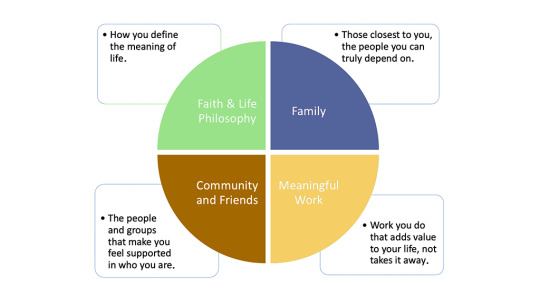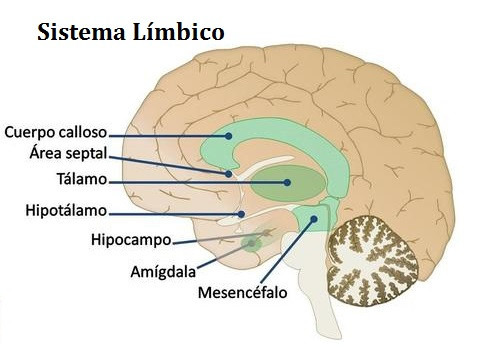#Barbara Fredrickson
Explore tagged Tumblr posts
Quote
Your past moments of love and connection make you lastingly wiser.
Barbara L. Fredrickson
14 notes
·
View notes
Text
PAC; BEST MANIFESTATION TIPS 🪞🕯️☀️🐚
HIII! Today we will dive into how you can manifest anything, whats the technique for you, what can you do to accelerate the process, etc. SOOO.... lets begin!
note: paid subliminal requests/ custom subliminals are available. and also paid tarot readings are open, for more details dm!
FREE TAROT
PAID TAROT
pick a barbie character 👇🏻



PILE 1
if you're wondering how you can manifest things super quick & easily, you are at the right place!
the answer is: simply by asking and letting go. some methods i'd recommend are the love letter method, or any letter / paper method (specifically anything that has to do with folding paper) for that matter. the 17 second methods and the surrender method.( you can either ask me doubts/questions about this in the comments or search them up on yt)
you are the people that think of the first case scenarios first. y'all overthink sm, which is obv not good. and i'd say that you shouldn't supress those negative thoughts but rather face them. 2 major things for you guys is facing your fears and doubts, 2- letting go and trusting the universe/spirit/god (whatever you believe in) also you guys could resonate with the little mermaid's story.
SURRENDER and LET GO!
ask and surrender. believe in the universe (444) and you've LITERALLY got this.
PILE 2:
Okie so if you're wondering how you can manifest things super quick & easily, you are at the right place!
the angel numbers that you see are not just co incidences, no, nope. they mean something. they are a reminder! they are a sign!!
the way that you guys manifest is through emotions my dear empaths. like even before i started your readings that is something i picked up upon, and if you want to know a litlle more scientific stuff about it then do check out barbara fredrickson's broaden and build theory. that will help you know what i mean. . whatever you feel within is what you attract, so think of good stuff, happiness, celebrate small victories.
some manifestation methods i'd recommend are gratitude, crystal work, green witch kinda stuff? water manifestation (especially sun water) , fake it till you make it, journaling & shadow work.
PILE 3:
hello! if you're wondering how you can manifest things super quick & easily, you are at the right place!
you are my prayer peeps, doesn't have to be very religious but you do believe in the power of prayers or asking the universe.
right off the bat you guys are my socially? "weird" people. the kids that are creative and different. yall are ENTHUSIAISTIC fssss. sm energy,sm passion ong. and the way you can manifest is through directing that energy into the right place. yall seem mis-directed in some way. another way you can manifest is through talking and connecting? writing? something around those llines like sharing your work/thoughts in some way.
i think you guys should read about ancient greek wisdom.
old literature and ancient knowledge will guide you towards an entire new perspective/world.
also calm tf down, like yeah we get it you want to have that thing rn/in a week but calm down my friend, ground yourself. also y'all need to relax & guide your mind it seems veryyy excited. its good but NOOO (its not helping atm)
basically redirection,taking steps, community, sharing knowledge & gaining knowledge, anient related stuff, prayers and staying happy/motivated, being free spirited, working with animals?.
some manifestation methods i'd recommend are vision boards, prayers, ancient manifestation tricks/methods? connecting with people/ sharing your knowledge., having a white pet could be lucky for you. or white is your lucky color and color magick too and taking actual actions/steps!!.
i think that you guys are pretty good at manifesting already, its more like a confirmation? (okay i fucking just realised y'all chose the weird barbie, its so reallll)
lmk your thoughts!!!
#law of attraction#manifesation#pick a card#psychic readings#free tarot reading#pac reading#pick a card reading#tarot witch#witchblr#free tarot#paid tarot reading#paid tarot readings#tarot tuesday#daily tarot#pick a picture#pick a card tarot#pick a pile#loa assumptions#tarot community#tarotcommunity#tarotblr#tarotdaily#tarotoftheday#free tarot readings#witch community#tarot reading#pac tarot reading#tarotonline#pac tarot#pac
138 notes
·
View notes
Text
5 Great Essays about the Psychology of Love

The Science of Love by Barbara Fredrickson - We each carry an intricate machinery of love, calibrating and attuning our moods and bodies to one another
The Rejection Lab by Alison Kinney - What can researching human responses to rejection tell us about ourselves?
Love Is Like Cocaine by Helen Fisher - From ecstasy to withdrawal, the lover resembles an addict
Endless Love by Aaron Ben-Ze’ev - We no longer expect passion to last a lifetime, but some couples do stay in love to the end. What’s their secret?
Love by Lauren Slater - Scientists say that the brain chemistry of infatuation is akin to mental illness—which gives new meaning to ‘madly in love'
27 notes
·
View notes
Text
🌟 falling for Hong Kong
Traveling to a new place always brings a mix of excitement and anxiety, but Hong Kong captured my heart in ways I never anticipated. The bustling streets felt like the heartbeat of a living organism, pulsating with energy. The city lights weren't just beautiful; they were mesmerizing, each one telling a story, each hue blending into a kaleidoscope of dreams. The aroma of the city, a blend of street food, sea breeze, and urban life, was intoxicating, drawing me in deeper with every breath.

Psychologically, this experience can be explained through the lens of the broaden-and-build theory by Barbara Fredrickson. This theory suggests that positive emotions broaden our awareness and encourage novel, varied, and exploratory thoughts and actions. The excitement and fascination I felt in Hong Kong broadened my perspective, allowing me to fully immerse myself in the culture and environment.
From the moment I arrived, the ease of transportation made exploring this vibrant metropolis a joy. The efficient public transport system was more than just convenient; it felt like an invitation to discover every hidden corner, every new adventure waiting around the next turn. In Hong Kong, I found not just a destination, but a place where every journey became part of a larger narrative of discovery and connection.
Maslow's hierarchy of needs also comes into play here. The comfort and security provided by Hong Kong's infrastructure satisfied my basic and safety needs, allowing me to focus on higher-level needs such as belongingness, love, and self-actualization. Traveling through the city, I felt a profound sense of connection with the people and the place, fostering a deeper understanding of myself and the world around me.
2 notes
·
View notes
Text
Evidencia 1
Barbara Fredrickson propone la existencia de diez emociones positivas: alegría, gratitud, orgullo, interés, amor, diversión, serenidad, esperanza, inspiración y asombro.
Se formarán en binas para realizar este trabajo.
Crea un personaje que represente la emoción que quieras representar.
Con base en tu personaje, escribe un guión que cuente una historia en al menos tres escenas.
Selecciona la música que cuente la historia del guión.
El personaje contará con su propia música (diferente a la de las escenas) y se incluirá en cada una de las escenas para saber que está presente.
Cuenta la historia con música.
Después de seleccionar la música, crea un audio con las siguientes características:
Al inicio del audio incluye el nombre de la emoción y el nombre del cuento.
Utiliza diferentes tipos de música para representar cada una de las escenas.
Recuerda que la música del personaje lo describe y tiene que estar presente en cada escena.
La duración es de tres minutos como mínimo.
Recuerda utilizar efectos de sonido conforme vas narrando el cuento.
Puedes utilizar los software de edición de audio que se vieron en clase.
Sube tu audio en SoundCloud o Google Drive y posteriormente publícalo en tu blog.
0 notes
Text
🎂 Azi o aniversăm pe Barbara L. Fredrickson.
Cărțile autoarei au astăzi preț special, cu 25% reducere față de prețul afișat.
La mulți ani!
0 notes
Text
Does happiness affect production?
The relationship between happiness and productivity has been a subject of extensive research and debate in recent years. While it might seem intuitive that a happy worker is a productive worker, understanding the specific ways in which happiness influences productivity can provide valuable insights for both individuals and organizations. This blog explores how happiness affects production and why fostering a positive work environment is crucial for achieving high performance and business success.
The Science Behind Happiness and Productivity Psychological Theories: Psychological theories suggest that happiness leads to a more engaged and motivated workforce. According to the Broaden-and-Build Theory by Barbara Fredrickson, positive emotions expand an individual's awareness and encourage novel, varied, and exploratory thoughts and actions. This broadened mindset can enhance creativity and problem-solving abilities, essential components of productivity.
Neuroscientific Evidence: Neuroscientific studies have shown that happiness boosts the production of dopamine and serotonin, neurotransmitters associated with pleasure and well-being. These chemicals improve cognitive functions such as learning, memory, and attention, which are critical for efficient and effective work performance.
How Happiness Boosts Productivity Increased Engagement: Happy employees are more likely to be engaged with their work. Engagement is a critical factor in productivity as it drives commitment, enthusiasm, and a willingness to go the extra mile. Engaged workers are more likely to invest their time and energy into their tasks, leading to higher quality outputs and better overall performance.
Enhanced Creativity and Innovation: Positive emotions foster a more creative and innovative mindset. When employees are happy, they are more open to new ideas and approaches, which can lead to innovative solutions and improvements in processes. Creativity is particularly important in industries that require problem-solving and adaptability.
Better Team Collaboration: Happiness promotes better social interactions and teamwork. Happy employees tend to communicate more effectively, exhibit greater empathy, and resolve conflicts more efficiently. This collaborative environment is conducive to productivity as it ensures that team members work together seamlessly towards common goals.
Lower Absenteeism and Turnover Rates: Happier employees are less likely to take sick leave or leave the organization. Lower absenteeism means that employees are consistently present to complete their tasks, while lower turnover rates save the organization the costs associated with recruiting and training new staff. Stability within the workforce contributes to sustained productivity.
Improved Customer Service: Employees who are satisfied with their jobs are more likely to provide excellent customer service. Positive interactions with customers can lead to increased customer satisfaction, loyalty, and ultimately, better business outcomes. High-quality customer service is a direct contributor to the productivity and success of a company.
Creating a Happy and Productive Work Environment Fostering a Positive Culture: A positive work culture is essential for employee happiness. This includes recognizing and rewarding achievements, promoting work-life balance, and encouraging open communication. A supportive and inclusive environment makes employees feel valued and respected, which in turn enhances their productivity.
Providing Growth Opportunities: Opportunities for professional growth and development are critical for employee satisfaction. Offering training programs, career advancement opportunities, and skill development initiatives can make employees feel invested in their roles and motivated to perform at their best.
Ensuring Fair Compensation and Benefits: Fair compensation and comprehensive benefits are fundamental to employee happiness. Competitive salaries, health benefits, and other perks contribute to financial security and well-being, allowing employees to focus on their work without undue stress.
Promoting Health and Well-being: Promoting physical and mental health is crucial for a happy workforce. This can be achieved through wellness programs, mental health support, flexible working hours, and a healthy work environment. Employees who feel healthy and supported are more likely to be productive.
Happiness and productivity are intrinsically linked, with numerous studies and real-world examples illustrating that a happy workforce is indeed a more productive one. By investing in the well-being and satisfaction of employees, organizations can reap the benefits of enhanced performance, creativity, and efficiency. Fostering a positive work environment is not just beneficial for employees; it is a strategic advantage for businesses aiming for long-term success. Therefore, prioritizing happiness at work is essential for achieving optimal productivity and organizational growth.
0 notes
Text
The Science Behind Happiness: Psychological Tips for a Joyful Life
The Basics
Happiness is often thought of as a fleeting feeling of joy or pleasure, but psychologists define it more broadly as a state of well-being that encompasses living a good life—one with a sense of meaning and deep satisfaction. Positive psychology, a branch of psychology focused on studying what makes life worth living, has uncovered several key components of happiness.
The Role of Positive Emotions
Positive emotions, such as joy, gratitude, and contentment, play a crucial role in our overall happiness. They not only make us feel good in the moment but also contribute to long-term well-being. According to Barbara Fredrickson’s Broaden-and-Build Theory, positive emotions broaden our awareness and encourage novel, varied, and exploratory thoughts and actions. Over time, this builds our personal resources, enhancing our resilience and overall life satisfaction.
Cultivating Gratitude
One of the most powerful tools for increasing happiness is cultivating gratitude. Research shows that regularly practicing gratitude can lead to greater happiness and well-being. Simple practices, such as keeping a gratitude journal or regularly expressing thanks to others, can shift our focus from what we lack to what we have, fostering a more positive outlook on life.
The Importance of Relationships
Strong, supportive relationships are fundamental to our happiness. Humans are inherently social creatures, and our connections with others significantly impact our well-being. Studies have shown that people with close friendships and strong social networks tend to be happier and live longer. Investing time and effort in nurturing our relationships can lead to a more joyful and fulfilling life.
Finding Meaning and Purpose
Having a sense of purpose and meaning in life is another critical component of happiness. Engaging in activities that align with our values and contribute to a larger cause can provide a deep sense of fulfillment. Whether through our careers, hobbies, or volunteer work, finding ways to make a positive impact can enhance our overall well-being.
Mindfulness and Happiness
Mindfulness, the practice of being present and fully engaged in the moment, has been shown to increase happiness and reduce stress. By focusing on the present and accepting our thoughts and feelings without judgment, we can experience greater peace and contentment. Mindfulness practices, such as meditation and deep breathing exercises, can be powerful tools for enhancing our well-being.
The Role of Physical Activity
Physical activity is not only good for our physical health but also our mental health. Regular exercise has been linked to improved mood and increased happiness. Physical activity releases endorphins, the body’s natural feel-good chemicals, and can also serve as a distraction from negative thoughts and stress.
Acts of Kindness
Performing acts of kindness, whether big or small, can boost our happiness. Helping others not only benefits the recipient but also enhances the giver’s well-being. Acts of kindness promote a sense of connection and community, which are essential for our happiness.
Psychological Tools for a Joyful Life
Incorporating psychological tools and techniques into our daily lives can significantly enhance our happiness. Cognitive-behavioral strategies, such as reframing negative thoughts and setting realistic goals, can help us maintain a positive outlook and achieve greater life satisfaction.
Unlocking the Path to Happiness
Understanding the science behind happiness provides us with valuable insights and practical strategies for leading a joyful life. By cultivating positive emotions, practicing gratitude, nurturing relationships, finding meaning and purpose, embracing mindfulness, staying active, and performing acts of kindness, we can enhance our well-being and create a fulfilling life.
As you embark on your journey to greater happiness, remember that support is available to help you navigate the complexities of psychological well-being. Our Psychology Journal Review offers expert guidance in crafting detailed and accurate psychological assessments, ensuring you have the resources needed to achieve your goals and enhance your life.
Start implementing these psychological tips today and unlock the path to a more joyful and fulfilling life. Happiness is not just a destination but a journey—one that is enriched by understanding and applying the principles of positive psychology.
0 notes
Text
Manifesting Your Dreams: 10 Practical Steps to Attract the Life You Want
Elevate your manifestation practice and turn your dreams into reality. 🌟💫 #ManifestYourDreams #AbundanceMindset #LawOfAttraction #PersonalDevelopment
1. Dream Big Dreaming big is about expanding your vision beyond the ordinary. It’s not just about setting goals; it’s about creating a vivid mental picture of the life you desire. According to psychologist Dr. Barbara Fredrickson, positive emotions broaden our thinking and help us envision larger possibilities. Spend time each day visualizing your dream life. Imagine the details: the sights,…

View On WordPress
0 notes
Text
Universal joy emerges from uplifting videos, as per psychologist Dr. Martin Seligman. Dr. Barbara Fredrickson's research shows joy broadens our mindset, fostering lasting personal resources and enhancing overall well-being. Dr. Pamela Rutledge notes joy videos activate mirror neurons, fostering empathy and communal joy. These videos trigger neurochemical responses, profoundly impacting emotional well-being.
Connect, thrive, and succeed with riseandinspire.co.in!
0 notes
Text
Importance of Positive Attention For Children’s Behavioural Growth

Do you often find yourself yelling at your child? Are you tired of trying to discipline them? If your patience wears thin every time you address your child’s behavioral issues, it’s probably time to change your approach.
Positive reinforcement is a parenting technique that focuses on the principles of positive psychology without resorting to threats, punishment, or humiliation. It involves highlighting a child’s positive traits and strengths, empowering them to display their best behavior through deeper connections and communication. If you haven’t given positive reinforcement a try, here’s why you should consider it now.
Understanding and Practicing Positive Attention
Sometimes, the little things matter the most. Positive attention during interactions with children is a vital aspect of parenting. When you respond to them warmly and curiously, it instills trust and security, which has a lasting impact. Parents can express positive attention through eye contact, smiles, gentle touch, kind words that uplift their spirits, and showing interest in their activities, celebrations, or achievements.
Research suggests that employing positive attention when interacting with children tends to reduce their negative behaviors. Children crave attention from their parents and will go to great lengths to seek it. When you pay more attention to them for positive behaviors rather than negative ones, their attitude shifts. Therefore, the importance of positive attention begins in infancy and continues throughout childhood.
How to Deal With Misbehaviour?
The most challenging aspect of positive reinforcement is to ignore or withdraw your attention from children when they misbehave. Instead of scolding, punishing, or humiliating them, simply ignoring them sends the message that acting out is not the way to achieve their desires. According to child behavioral experts, this process is termed “active ignoring” when you cease interaction with them. Once the child calms down or begins following your instructions, redirect your attention towards them to reinforce your message clearly.

According to Lindsay Gerber, PsyD, a clinical psychologist, effectively practicing positive attention involves being verbal and specific when praising a child, helping them understand which behavior to replicate. This process, known as “labeled praise,” involves specifically mentioning and complimenting a particular behavior rather than simply praising the child. Positive attention can include rewards or simple gestures like hugs, kisses, or high-fives. Regardless of their age, appreciation makes children feel good, encouraging them to repeat the behavior in the future.
Another effective way to implement positive attention is by actively engaging in activities with the child. Take time to examine their work or join them in their tasks. Additionally, while conversing with the child, always allow them the chance to respond. This teaches children that their opinions matter, and adults are willing to listen to them.
Here are some positive reinforcement gestures that parents or caregivers can easily adopt:
Compliments, kind words, and rewards
Public praise
Physical gestures like kisses, hugs, lift of an eyebrow,thumbs up, nod, pat on the back, high-fives, or handshakes
Reading, playing, doing craft activities, or chores with parents
A homework-free night
Choice of activities or food
Increased playtime
Spending time with friends
According to Barbara Fredrickson’s research on positive emotions, a 5 to 1 ratio of positive to negative emotions contributes to happiness and yields better results in children. Positive feedback and descriptive encouragement are powerful motivators. They tap into children’s positive qualities, empowering them to repeat what they excel at. Even self-sufficient teenagers seek your approval of their choices. When you recognize their responsible choices and acknowledge them, you encourage them to continue behaving that way.
Filaantro believes in the power of positive reinforcement. The organization, along with its crowd-funding partner CHF, has positively impacted the lives of 44,81, 098 children all over India.
Thank you for taking the time to read the article. Make sure to share it with all your friends and family members.
#filaantro#fundraising#education#donate#crowdfunding#raise funds#charity#nonprofits#donations#volunteering
0 notes
Text

#QuoteOfTheDay (20231114):
“Yang penting bukan apa yang terjadi pada dirimu, namun bagaimana kamu bereaksi terhadapnya.” (Epictetus)
Barbara Fredrickson, PhD dari University of North Carolina berpendapat bahwa apa yang kita alami dalam kehidupan sehari-hari sebenarnya hanyalah akibat dari cara kita menginterpretasikan dan merespon lingkungan. Bagusnya, kita bisa memilih cara untuk ‘membebaskan diri’ dari respon negatif. Pada akhirnya kita akan menjadi pribadi yang lebih positif dengan banyak berlatih dan bersabar.
Bila masih sulit merespon baik. Bayangkan ujian Rasulullah ﷺ, "Wahai manusia, siapa saja orangnya dari kaum mukmin yang ditimpa musibah, hendaklah ia hibur dengan musibah yang menimpaku. Seorang dari umatku tidak akan pernah ditimpa musibah seperti musibah yang menimpaku." (Ibnu Majah: 1588); atau bayangkan ujian yang dialami saudara-saudara kita di Palestina. So, semangat!
#not #what #happens #to #you #but #how #react #that #matters #trials
Telegram channel: https://t.me/x_QoTD
0 notes
Text
Tandis que les hommes sont plus souvent représentés dans l’art et dans les médias avec une focalisation sur les traits du visage, chez les femmes l’accent est mis sur le corps - et plus encore quand il s’agit de femmes noires. Il est même fréquent que les photos des magazines montrent des femmes démembrées, éliminant leur tête complètement et se concentrant uniquement sur des morceaux de leur corps. L’objectification crée un milieu culturel dans lequel les femmes se traitent elles-mêmes comme des objets destinés à être regardés et évalués puisque l’appréciation de leur physique a davantage de conséquences sur leur vie professionnelle et amoureuse qu’elle n’en a pour les hommes.
Barbara L. Fredrickson et Tomi-Ann Roberts, Objectification theory. Toward understanding women’s lived experiences and mental health risks, Psychology of Women Quarterly, 1997
0 notes
Text
EL ARTE DE LA FELICIDAD
Del 30 al 50% de nuestra felicidad es heredado por nuestros genes y nuestra condición socio-económica, y entre un 10 y 30% de nuestra felicidad es completamente responsabilidad nuestra. La felicidad es como una dieta balanceada compuesta de 4 aspectos fundamentales.

La ecuación de la felicidad puede ser definida del siguiente modo:
Felicidad = goce + satisfacción + significado
Donde el goce es el placer cultivado, es decir el alcohol te puede dar placer, pero sólo la cata de un buen whisky y un paladar entrenado te puede dar ese goce. La satisfacción no depende de las cosas que obtienes sino de las que deseas, mientras más cosas desees mayor será tu insatisfacción. Mientras más valores lo que tienes mayor será tu satisfacción. Y por último significado, es la percepción del valor de nuestra vida, y es durante los momentos más duros de nuestra que aprendemos a valorar nuestra vida.
El éxito no es el camino a la felicidad, la felicidad es el camino hacía el éxito. Las personas felices obtienen más éxito.
El sistema subconsciente que regula nuestras emociones se llama el sistema límbico.

Nuestra felicidad es activamente influenciada por nuestros hábitos y conductas, pero hay que tener en cuenta que estos hábitos y conductas no son los mismo que nos mantienen mentalmente sanos. Es decir no basta con evitar caer enfermos, es necesario trabajar activamente en mejorar nuestra felicidad.
Portafolio de la felicidad
Posturas Filosóficas
Familia
Amigos
Trabajo
Éxito obtenido y apoyo a los demás
Gratitud
Psicología positiva
"The field of positive psychology at the subjective level is about valued subjective experiences: well-being, contentment, and satisfaction (in the past); hope and optimism (for the future); and flow and happiness (in the present). At the individual level, it is about positive individual traits: the capacity for love and vocation, courage, interpersonal skill, aesthetic sensibility, perseverance, forgiveness, originality, future mindedness, spirituality, high talent, and wisdom. At the group level, it is about the civic virtues and the institutions that move individuals toward better citizenship: responsibility, nurturance, altruism, civility, moderation, tolerance, and work ethic." —Seligman, Martin E. P., and Csikszentmihalyi, Mihaly. "Positive Psychology." The American Psychologist 55, no. 1 (2000): 5-14.
La sicología positiva sostiene que la práctica de emociones positivas aumenta nuestra capacidad de sentir más emociones positivas y construye nuestra resiliencia para manejar las emociones negativas
"The mission of positive psychology is to understand and foster the factors that allow individuals, communities, and societies to flourish....What role do positive emotions play within positive psychology? Traditional views would suggest that experiences of positive emotion signal well-being and perhaps guide behavior in the moment. The [broaden and build] theory suggests that positive emotions, although fleeting, also have more long-lasting consequences. In contrast to negative emotions, which carry direct and immediate adaptive benefits in situations that threaten survival, the broadened thought-action repertoires triggered by positive emotions are beneficial in other ways. Specifically, these broadened mindsets carry indirect and long-term adaptive benefits because broadening builds enduring personal resources, which function as reserves to be drawn on later to manage future threats....Positive emotions are vehicles for individual growth and social connection: By building people’s personal and social resources, positive emotions transform people for the better, giving them better lives in the future." —Fredrickson, Barbara L. "The Role of Positive Emotions in Positive Psychology." The American Psychologist 56, no. 3 (2001): 218-26.
The PERMA Model
PERMA basically stands for Positive Emotion, Engagement, Relationships, Meaning, and Accomplishments.

Mi puntaje perma

La encuesta PANA

Los resultados del PANA pueden ser interpretados dentro de los siguientes perfiles

Una vez eres consciente de los afectos que manifiestas es posible removerte de la emoción, observarlos y cambiarlos. Y es ahí cuando comienza la plasticidad cerebral, la posibilidad del cambio de conducta.
La infelicidad no es lo mismo que la falta de felicidad.
Método de la reconstrucción del día
Se debe de hacer una lista de cosas que realizas en tu día a día y ordenarlas en el orden que te hacen más feliz a menos feliz.
Oxitocinas
Evolutivamente estamos programados para sobrevivir y reproducirnos, una métrica que indica si estamos siendo exitosos en ese aspecto son los nietos. Es decir hemos producido hijos con el suficiente éxito que son capaces de tener hijos. A la evolución no le importa si eres feliz, pero esta demostrado biológicamente que las personas felices viven más, viven mejor, es decir son más exitosas evolutivamente.
La oxitocina es la hormona del amor, de la calma y el contacto, solo se libera cuando se dan estas condiciones.
Este liberación de oxitocina es la que determina si vamos a cooperar o tener conflictos con las personas que vamos conociendo. Según Adam Smith, el interés propio beneficia tanto a los individuos como a las naciones en la creación del bien común y el beneficio mutuo para todos. Los estudios científicos han demostrado que liberamos oxitocina cuando hacemos labores pro-sociales. De hecho, el diseño del cerebro produce empatía lo que nos aleja del vicio y nos acerca a la virtud. La oxitocina refuerza la empatía y reduce nuestra aversión a las interacciones sociales. De este modo se sabe que ayudar a otros nos hace mas felices y por lo tanto también nos beneficia.
La mejor forma de aumentar los niveles de oxitocina es interactuar con otras personas, ver una película o tener una mascota.
Las redes sociales también sirven par aumentar la oxitocina, pero no es tan buena como la interacción en tiempo real de persona a persona. Ya que se dejan de lado ciertos sentidos y la interacción siempre está limitada por el formato (texto, audio, video-llamada, etc.)
Amor
El opuesto del amor no es el odio ni la indiferencia, el opuesto al amor es el miedo. Biológicamente no podemos sentir ambas emociones a la vez, ambas se anulan, el amor en el hemisferio izquierdo y el miedo en el derecho. Lao Tzu decía "Con amor, uno nunca tiene miedo". La práctica continúa del amor nos quita el miedo y es el centro de nuestra felicidad.
Eros: amor romántico
Philia: Amistad verdadera
Agape: Amor por todos
Pragma: Amor por conveniencia
Philautia: Amor por uno mismo
Los sietes hábitos que nos llevan a la felicidad y buena salud son.
No fumar.
No abusar del alcohol.
Mantener un peso saludable.
Hacer ejercicio diariamente.
Desarrolle un estilo de afrontamiento adaptativo (es decir, buenas prácticas de resolución de conflictos).
Fomentar una mentalidad de crecimiento (invertir en educación o en prácticas de aprendizaje de vida).
Mantener amistades saludables y relaciones amorosas duraderas.
Felicidad es amor. El sabio egoísta cuida de las otras personas. La sabiduría es aprender a no espantar el amor. Cuida de tu cuerpo como si lo fueras a necesitar por 100 años Los buenos recuerdos y experiencias deben de ser cuidadosamente planeados, ideados y cultivados. Por que son cosas que no pasan por si solas.
El perdón
El método REACH
Recall the hurt
Empathize with the person who hurt you
Altruistic gift of forgivenes
Commit yourself
Hold on to forgivenes
Tong len
“Instead of moaning about your situation, feeling sorry for yourself, and being overwhelmed by anxiety and worry, you can, in fact, save yourself from additional mental pain and suffering by adopting the right attitude. Practicing Tong-Len meditation or ‘giving and receiving,’ may not necessarily succeed in alleviating the real physical pain or lead to a cure in physical terms, but what it can do is protect you from unnecessary additional psychological pain, suffering, and anguish.” —Cutler, H. The Art of Happiness: A Handbook for Living. New York: Riverhead Books, 1998.
Meditación del perdón
Nueve pasos para perdonar
Ocho fundamentos a la hora de perdonar
Soledad
The German-American Philosopher Paul Tillich expressed well the distinction between being physically alone and feeling lonely: “Solitude expresses the glory of being alone, whereas loneliness expresses the pain of feeling alone.”
El músculo social
Desconectate: Busca momentos durante el día para dejar los celulares a un lado y conectar con alguien.
Haz pequeños favores: Esfuérzate en ser amable y útil
Trabaja en equipo: Aunque puede resultar mucho más productivo que cada quien trabaje por su cuenta, muchas veces el compartir una tarea puede aportar nuevas perspectivas al objetivo.
Expándete: Trata de conectar con personas en distintos niveles y en distintos temas, la resiliencia y la calidad de decisión del equipo se beneficia de la diversidad del conocimiento, experiencia y capacidades de sus miembros.
Saluda: A veces un simple hola es suficiente para ejercitar el músculo social y evitar la soledad.
Practicar un constante contacto social con otras personas activan nuestras neuronas espejo, que son células cerebrales que se disparan cuando tenemos interacciones o ante determinados eventos. La soledad hace que estas neuronas se apaguen o no se activen muy seguido, lo que aumenta los efectos negativos de la soledad.
Comparación social
La comparación social es dañina en algunos casos. Hay estudios donde se demuestra que los atletas que ganan una medalla de plata se sienten más tristes que los que ganan una medalla de bronce. Esto es debido a que se comparan con los que ganaron una medalla de oro y los que ganaron una medalla de bronce se comparan con las personas que no ganaron nada.
Las redes sociales son una fuente de estímulos para compararnos con otras personas todo el tiempo, por eso es necesario regular su uso si sentimos que nos esta afectando negativamente.
La amistad y la felicidad
Según Aristóteles existen tres tipo o niveles de amistad:
La amistad por utilidad que tiene su origen en contratos y acuerdos y raras veces se acerca a temas como la política, amor o religión.
El segundo nivel es la amistad basada en placer, tiene su origen en la admiración mutua, donde cada persona obtiene placer de la otra.
El último nivel de amistad, es la denominada "perfecta". Esta basada en un lazo de virtud y amor por una fuerte externa de significado. (Deportes, literatura, viajes, etc.)
Una relación es perfecta cuando se enfoca en mejorar las circunstancias de la otra persona. Y no solo se limita al placer o la utilidad.
La palabra griega "telico" significa objetivo o finalidad, podemos describir a las relaciones como télicas o atélicas. Esta es la diferencia de los amigos verdaderos y amigos de contrato.
Las amistades atélicas ofrecen amor incondicional y como buscan el amor por una tercera cosa, la amistad en sí es su propia recompensa.
Chequeo de la amistad Respóndete las siguientes preguntas, con cuantas personas puedes conversar de temas personales. Si apenas puedes nombrar dos o tres personas, todo esta bastante claro. Pero incluso si puedes nombrar 3 personas, responde con sinceridad cuando fue la última vez que tocaste temas personales. Si es hace más de un mes, tal vez te estás engañando sobre que tan cercanos son.
Una de las necesidades trascendentales, es que necesitamos la amistad de personas de las que no necesitamos nada. No las necesitas simplemente las quieres.
La estrategia de la señal opuesta OSS

La reverse bucket list
Tener una lista de pendientes parece una buena idea, pero en la práctica la satisfacción que obtenemos al cumplir nuestras metas es solo momentánea y siempre agregamos un nuevo pendiente de forma inacabable. La estrategia de la lista de pendientes invertida o reverse bucket list, consiste en enumerar y valorar lo mínimo que debemos de tener para conservar nuestra felicidad.
Los 4 idolos
¿Tener más dinero, poder, placer y fama siempre nos hace más felices? ¿Cómo podríamos reevaluar nuestra relación con estos elementos para que nos ayuden a ser más felices, pero que no acaben convirtiéndose en objetivos en sí mismos?
Santo Tomás de Aquino creía que estas cuatro cosas prometían felicidad, pero nunca podrían entregarla porque nunca nos satisfacen por completo, sin importar cuánto las persigamos. Esto nos frustra. Pero cuanto más nos frustramos, más se desordena nuestra voluntad para luchar por el dinero, el poder, el placer y la fama. Tomás de Aquino creía que estas cosas son ídolos porque desarman nuestro juicio y engañan nuestra mente.
Dinero y la felicidad: Aunque los economistas han descubierto que, después de cierto punto (cerca de los 70K), los aumentos en los ingresos o la obtención de un aumento no mejoran el bienestar, el dinero puede ser útil para eliminar las fuentes de infelicidad pero no es una fuente proporcional de felicidad.
Adaptación hedónica
La adaptación hedónica, también conocida como rueda hedónica (hedonic treadmill), es una tendencia observada en la psicología por la que los humanos siempre retornan a un estado relativamente estable de felicidad después de sufrir importantes cambios positivos o negativos en su vida. En otras palabras, a medida que una persona obtiene logros, objetivos o comodidades, sus deseos y expectativas crecen al mismo ritmo, dejándole con el mismo nivel de felicidad que tenía al principio. El término fue acuñado por Philip Brickman y Donald T. Campbell en su ensayo de 1971 "Hedonic Relativism and Planning the Good Society".
"But there is a better approach: framing any decision we face by asking ourselves, “Will it bring me happiness?" That simple question can be a powerful tool in helping us skillfully conduct all areas of our lives, not just the decision whether to indulge in drugs or that third piece of banana cream pie....Approaching our daily decisions and choices with this question in mind shifts the focus from what we are denying ourselves to what we are seeking—ultimate happiness." —Art of Happiness, 36
El dinero solo debería de servir para cubrir tus necesidades materiales, experimentar la vida junto a otros y ayudar a buenas causas. Tu lugar de trabajo debería permitirte ganar tu éxito creando valor y sirviendo a otras personas.
Fuerza de voluntad y hábitos
La voluntad es como un músculo que puede fortalecerse y perder su fuerza ha sido respaldada por numerosos estudios en laboratorios y entornos sociales. La fuerza de voluntad, que generalmente se define como autocontrol, es una reserva de energía interconectada entre la mente y el cuerpo. Los científicos han examinado esta conexión al observar la modulación de la fuerza de voluntad en relación con el aumento y la disminución de los niveles de glucosa en el cuerpo. Al igual que la glucosa, la fuerza de voluntad es un recurso que utilizamos y que puede almacenarse pero también agotarse. Para optimizar nuestra fuerza de voluntad hacia nuestros objetivos, debemos hacer dos cosas: planificar adecuadamente y crear hábitos. El éxito de una meta está en gran parte relacionado con el tipo de plan que se implementa.
Para que un comportamiento se vuelva un hábito, una práctica bastante buena es, descomponer el comportamiento en sus partes más pequeñas. Es decir reducir, implementar y celebrar. Al tener pequeñas tareas por cumplir es muy fácil completarlas y poder celebrarlas lo que refuerza nuestro circuito cerebral.
"La etapa más alta posible en la cultura moral es cuando reconocemos que debemos controlar nuestros pensamientos". —El origen del hombre (1871), cap. 4
Thomas Cole y la U de la felicidad
El economista David Blanchflower, especializado en big data y su relación con temas económicos, descubrió que la felicidad es bastante alta en los primeros años de vida y luego va disminuyendo en nuestra adultez, y vuelve a aumentar durante nuestra vejez y en algunos casos decrece en los últimos años de vida.

Thoma Cole hizo una serie de cuadros "El viaje de la vida" en 1818 donde refleja esta dinámica de la vida de forma magistral y muy bella.
La infancia

Juventud

Adultez

Vejez

El significado de la vida.
Como obtener propósito coherencia y significado.
En el siguiente enlace se puede observar como muchas personas estudian una carrera para terminar trabajando en otra especialidad.
Primer actúa y luego piensa, aprendemos quienes somos con la experiencia —David Epstein
Tips para una vida bien diseñada
Sé curioso: invita a la exploración. No niegues la oportunidad de probar cosas nuevas o ampliar tus habilidades.
Pruebe cosas: tenga un sesgo para la acción, pruebe y cree prototipos de sus ideas. Ideas grandes o pequeñas, no se quede atascado soñando despierto con ellas y nunca probándolas.
Reformule los problemas: dé un paso atrás y asegúrese de que está trabajando en el problema correcto. Recuerde preguntarse, ¿es este el malvavisco correcto? ¿Estás esperando o trabajando por algo que realmente quieres?
Sepa que es un proceso: comprenda que a veces debe dejar de lado algunas de sus ideas y experimentos y reemplazarlos por otros nuevos. Actualizar sus creencias y prototipos es parte del descubrimiento de soluciones.
Busque una colaboración radical: colabore con otros, haga preguntas, busque consejo, encuentre las preguntas correctas para hacer. Si no puede resolver algo por su cuenta, trabaje con otros. Entreviste a personas que tengan la experiencia que le interesa o el conocimiento que necesita para resolver un problema.
El principio "actúa como sí"
La función central del principio “como si” es probar la felicidad compartiendo o modelando la felicidad que deseas tener con los demás. No necesitas tener una idea precisa de lo que quieres lograr, pero compartir y modelar la felicidad que deseas puede ser la clave para alcanzar la felicidad que aún no tienes.
Pasión y perseverancia
La verdadera gloria de Dios es una persona llena de vida. —San Ireneo de Lyon.
La verdad que solo florecemos cuando vivimos sin miedo y completamente comprometidos con nuestras vidas. Y el primer paso de ese compromiso es abrazar la esperanza.
0 notes
Text
"Dr. Barbara Fredrickson, another positive psychologist, says happiness is the fuel to thrive and flourish as well as to leave the world in better shape than you found it." Nicole Fisher, Be Happy! "Get free stuff everyday! In my Bio"
1 note
·
View note
Text
youtube
Barbara Fredrickson, autoarea cărții "Iubirea 2.0", ne explică iubirea, pornind de la știința emoțiilor și știința relațiilor.
0 notes